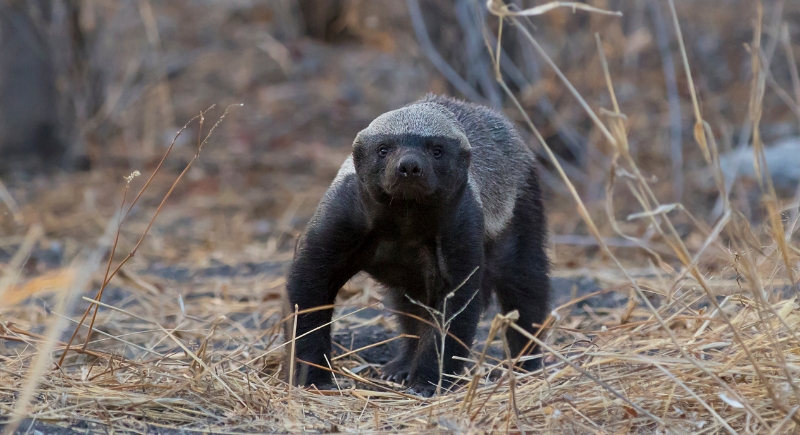There’s a Reason the Honey Badger Isn’t Afraid of Anything and It’s Insane
The honey badger, also called the ratel, has a reputation as the world’s most fearless animal, and Guinness World Records gave it the official title of “World’s Most Fearless Creature.” It might sound like a joke for an animal that stands only about 11 inches tall at the shoulder and weighs less than 30 pounds, but the animal has built a life strategy around toughness, brains, and a little bit of madness.
Honey badgers live across Africa, parts of Southwest Asia, and India. They roam huge territories, with males covering up to 310 square miles. Most of their foraging happens at night, which makes studying them incredibly difficult. Even researchers with years of experience rarely get more than a fleeting glimpse. Despite their nickname, honey is only a small part of their diet. They eat rodents, reptiles, insect larvae, tortoises, and snakes. They also won’t hesitate to go after young antelope, cheetah cubs, or eagle chicks if the chance comes along.
Built to Handle Trouble
One reason honey badgers survive encounters that would finish other animals is their skin. It’s not only thick but loose enough that if a predator like a lion grabs them, they can twist around inside their own hide and bite back. Their front claws, about an inch and a half long, are built for digging but just as effective in a fight. Young lions, leopards, or hyenas might test a honey badger once, but they usually don’t try again.
And while many think these creatures are immune to snake venom, that’s not quite right. They’ve developed resistance over generations, and young badgers are slowly introduced to venomous prey by their mothers during their long 14 to 18 months of upbringing. There are documented cases of honey badgers being bitten by puff adders or cobras. They pass out for a few hours, then wake up and continue as if nothing happened.
Clever Ways They Survive
Honey badgers do have an unpleasant weapon, but not in the way skunks do. They can release a foul-smelling substance from their anal pouch, and it’s strong enough to be smelled from 130 feet away. Researchers believe it might even calm bees when badgers raid hives. They’re after bee larvae more than honey, which is why beekeepers once considered them serious pests in South Africa.
In the early 2000s, many badgers were killed for damaging hives, but conservationists found simple fixes like raising hives off the ground. Now the killings have dropped, and the animals have been downgraded from “near threatened” to “least concern.”
The Real Story Behind the Fearless Reputation

Image via Getty Images/Massimo_S8
The “Honey Badger Don’t Care” video from 2011 turned the animal into an internet legend, but the reality is different. They aren’t charging around looking for fights. More often, they skirt trouble if they catch the scent or tracks of a predator. The clashes people love to retell usually happen when a badger is caught off guard while digging. With poor eyesight and its nose in the dirt, it’s easy to get surprised. Cornered like that, the badger stiffens up, rattles, and lunges forward.
That display is usually enough. Predators that take a swipe at a honey badger rarely try twice. What looks like a foul temper is also a kind of service to the landscape. Their digging flushes out rodents for jackals and birds of prey. Their raids on beehives keep numbers from running wild. They can be hurt and even killed, but the posture they carry convinces the world otherwise. That illusion of being untouchable is the core of their legend, and it’s why the reputation endures.